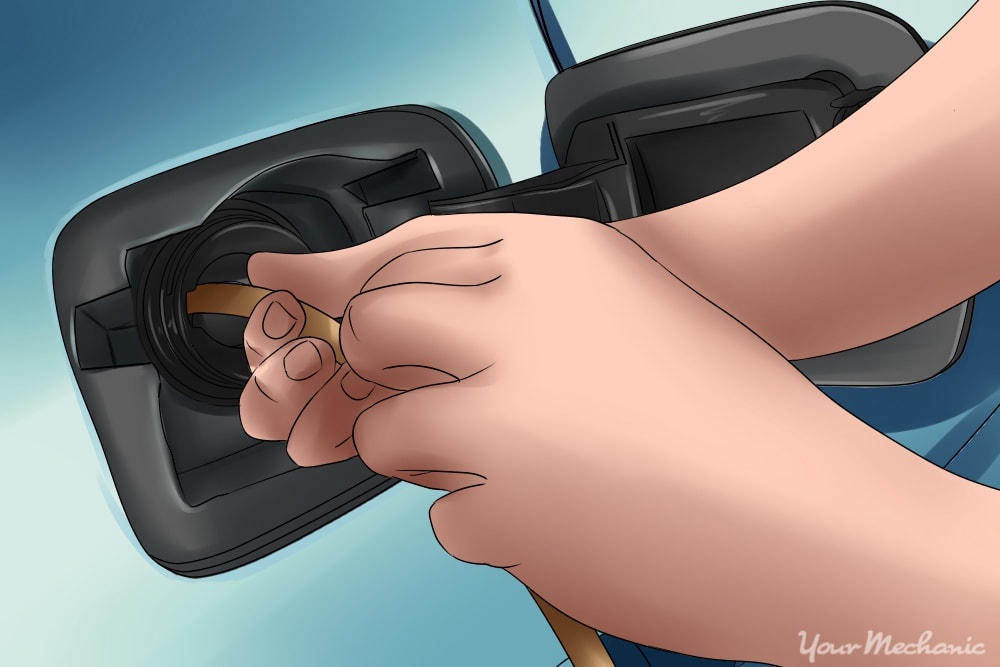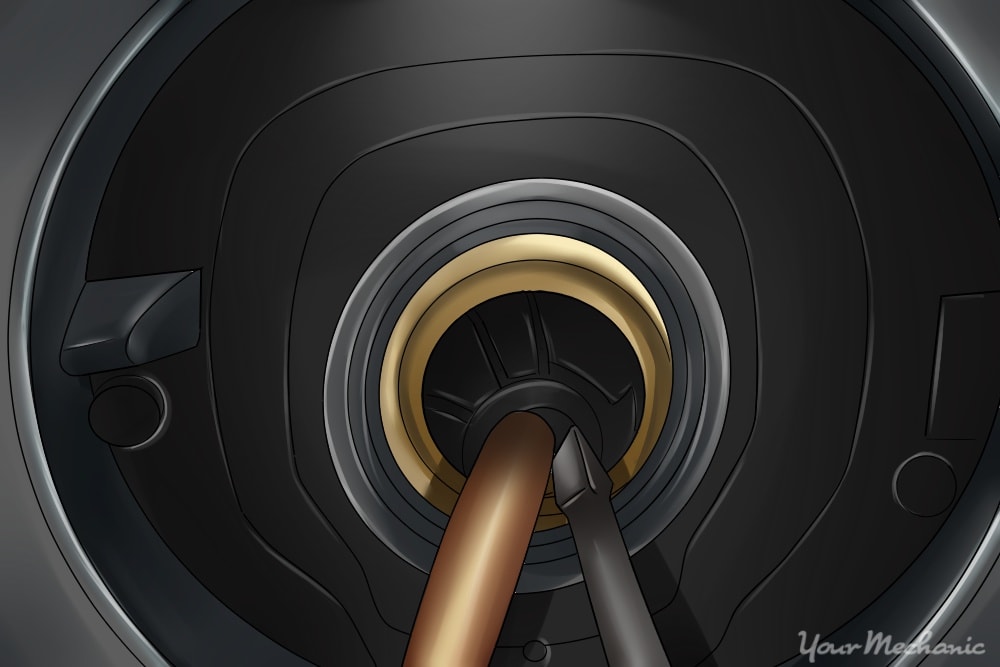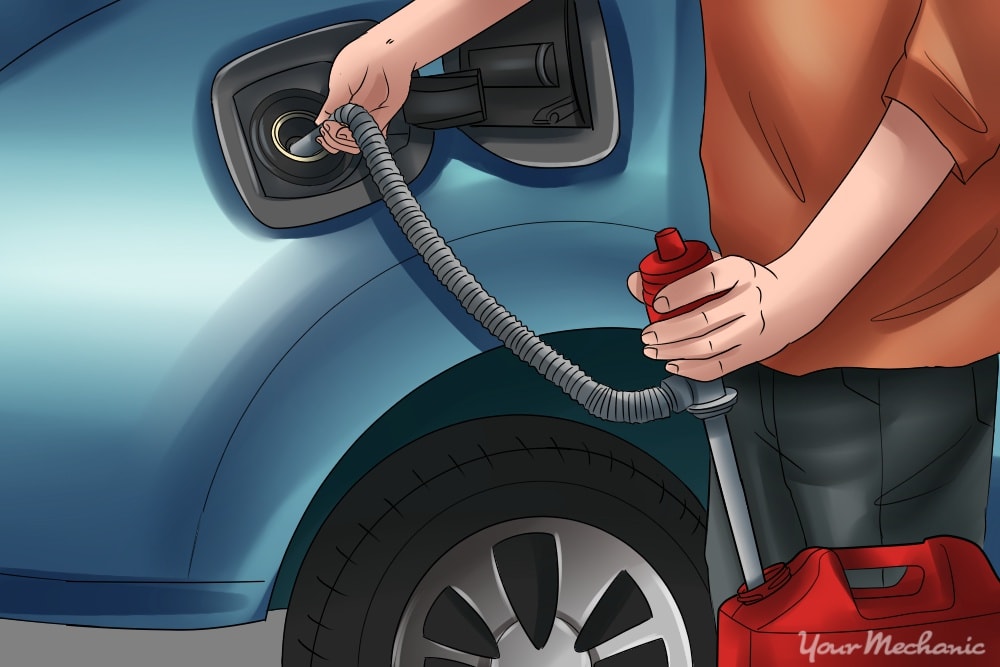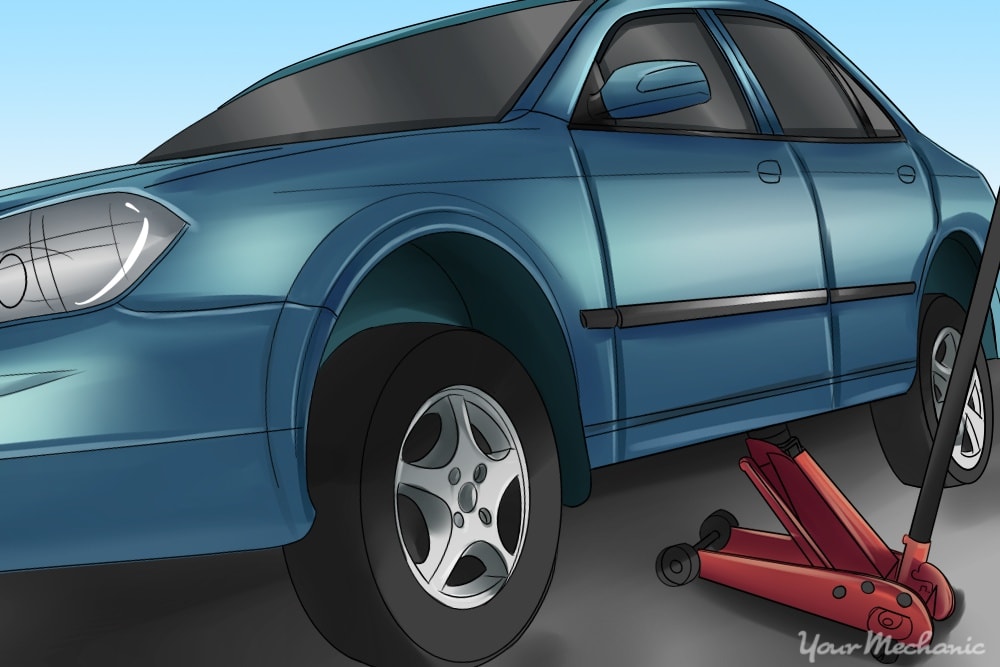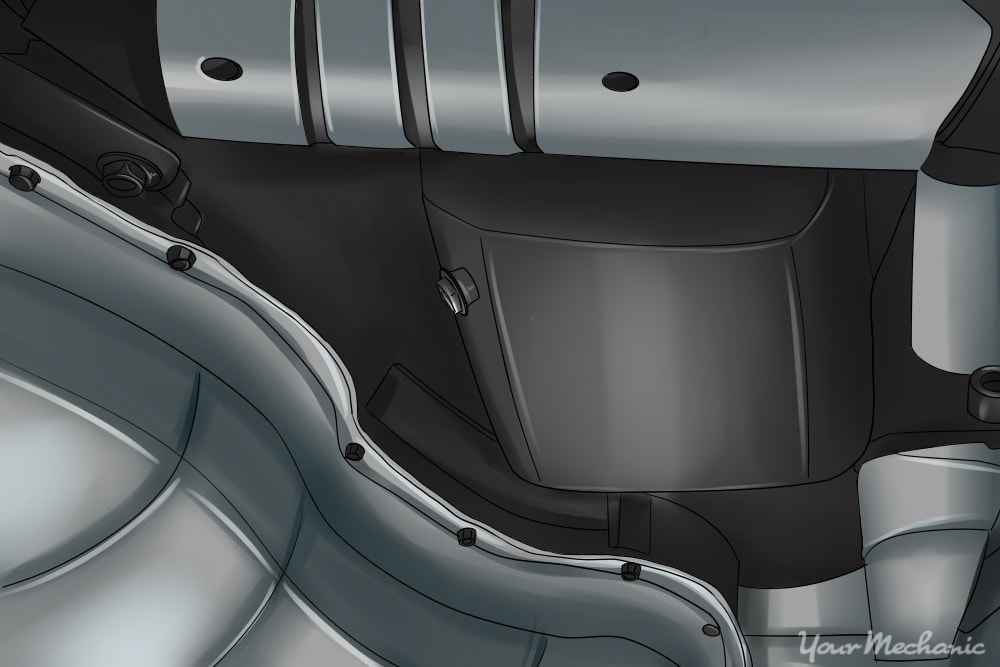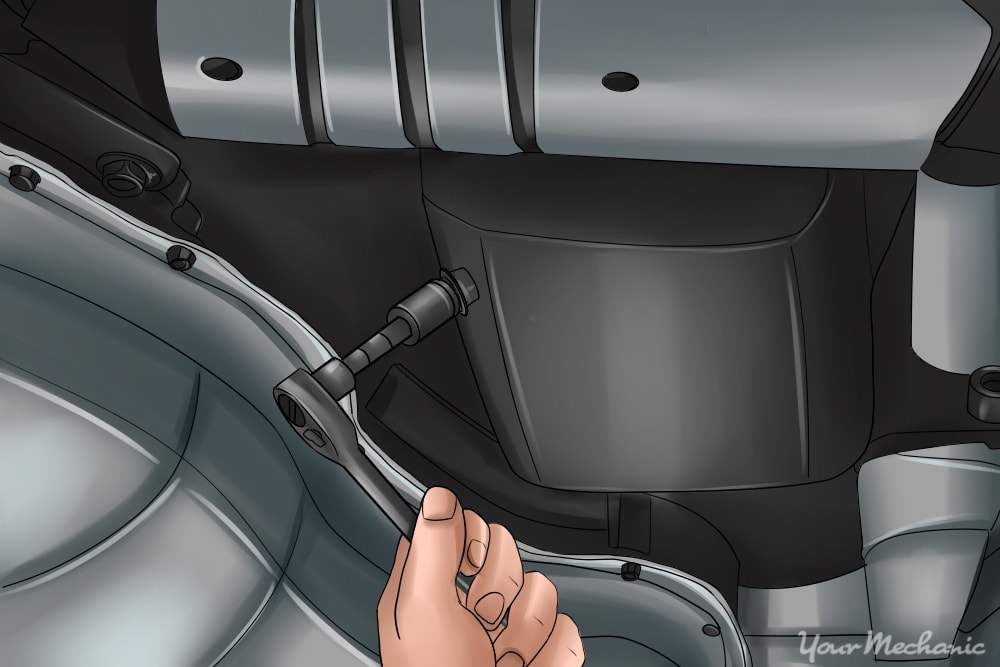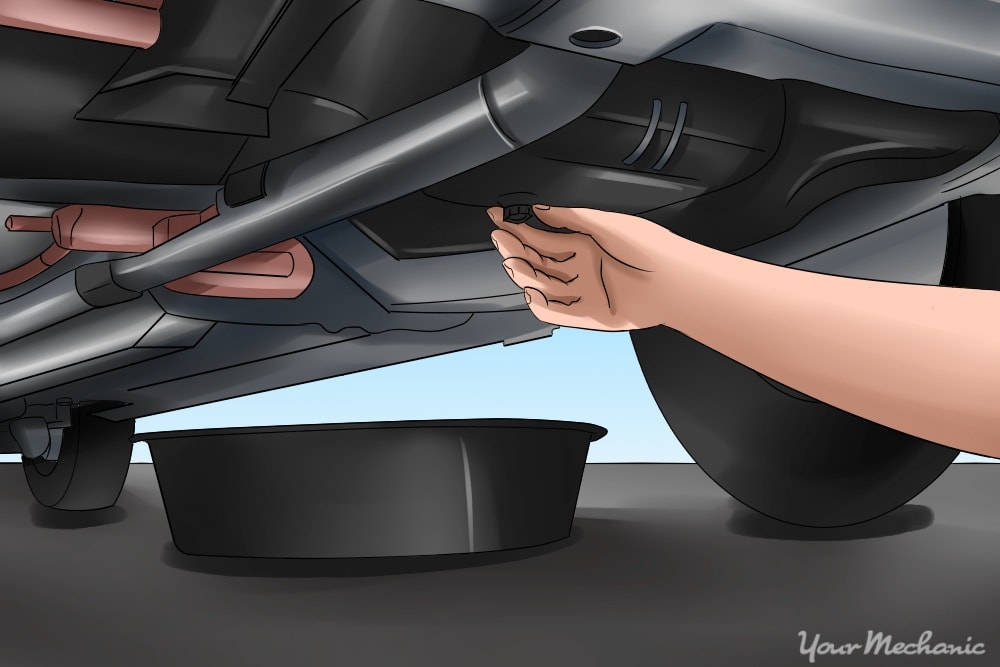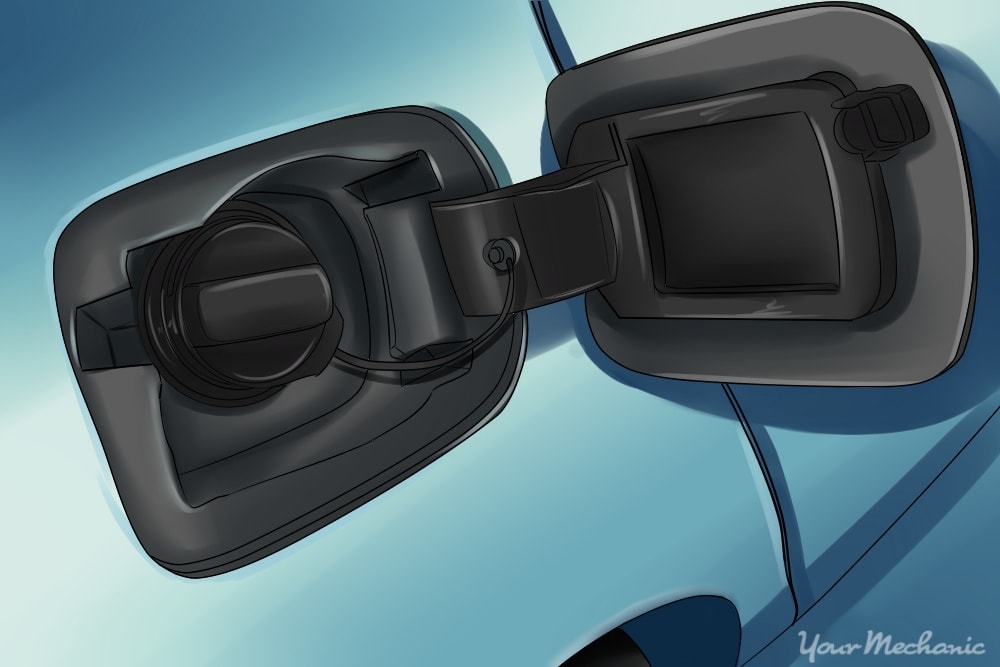

The majority of cars on the road today use internal combustion engines that use gasoline or diesel as fuel, and they store this fuel in a gas tank. Most gas tanks are located on the undersides of the vehicle and are designed to keep the fuel from exiting the tank once it has been poured in. That being said, there are times when it will is necessary to drain fuel from the tank, such as when replacing a fuel pump, cleaning a tank, or if you have accidentally filled it with the wrong type of fuel. In this guide we will go over two methods for draining fuel from a tank. Both methods require a minimal amount of hand tools and are relatively simple to carry out.
- Warning: Gasoline is a highly flammable liquid, and its vapors are hazardous to breathe. Therefore, make sure to work in as highly ventilated an area as possible, and be sure to keep any electronics, sparks, and open flames away from the vehicle at all times.
Method 1 of 2: Draining a gas tank using a siphon pump
The first method we will go over involves using a simple siphon hand pump to draw the fuel from the tank into a storage can.
Materials Needed
- Fuel storage can
- Long thin screwdriver
- Siphon hand pump
- Shop rag (to wipe up any potential spills)
Step 1: Drive the vehicle until the fuel is as low as possible. This will cut back the amount of draining that will need to be done.
There will be certain cases where this will not be possible, such as when a fuel pump has failed or when the incorrect fuel has been pumped into the tank. In these scenarios you need to be aware that the fuel tanks on some vehicles can hold upwards of eighteen gallons, some even more, so if that much fuel needs to be drained, make sure you have enough fuel storage cans to do so.
Step 2: Feed the siphon pump tubing into the fuel tank. Once you are ready to begin, open up the fuel filler door, remove the fuel cap, and begin to feed one end of your siphon pump tubing down through the fuel filler neck into the fuel tank.
If you notice that your fuel door won’t close or open, be sure to have a professional mechanic, such as one from YourMechanic, take a look at it.
- Tip: It may be a bit difficult to feed the tubing into the tank, as it is probably very flexible and will kink; a good technique is to feed it in very small increments, a little bit at a time, until the tubing has reached as far down into the tank as it can go.
- Tip: Many vehicles will also have a small metal door or flap that may prevent the tubing from being fed into the tank. If that is the case, use your screwdriver to push the small metal door open, and then proceed to feed the tubing down into the tank.
Step 3: Pump the fuel into the fuel storage tank. Once one end of your siphon pump tubing has been fed into the vehicle’s tank, feed the other end into your fuel storage tank and pump the hand pump until you see fuel moving through the tubing.
Continue to pump the hand pump until all of the fuel is drained and you can no longer see fuel moving through the tubing. This may take a bit of time, depending on the amount of fuel that needs to be drained.
Step 4: Dispose of or store the fuel. Once all of the fuel has been drained, properly dispose of or store the fuel and proceed with your repairs, or fill your vehicle with the correct type of fuel.
Method 2 of 2: Draining a gas tank using the fuel tank drain plug
Materials Needed
- Basic set of hand tools
- Drain pan
- Jack and jack stands
- Safety glasses
- Shop rag (to wipe up any potential spills)
Wood blocks or tire chocks
Note Not all vehicles will have a drain plug on the fuel tank. Before beginning be sure to research your specific vehicle to see if it indeed does have a drain plug.
Step 1: Drive the vehicle until the fuel is as low as possible. Similar to Method 1, Step1, this will cut back the amount of draining that will need to be done, saving time and energy.
If this is not possible, make sure you have enough drain pans to catch the amount of fuel to be drained from your vehicle.
Step 2: Raise one of the rear wheels of the vehicle and secure it on a jack or jack stands. Make sure to raise the vehicle enough to give space for maneuvering underneath the vehicle.
Set the parking brake, and use chocks or wood blocks under the tires to prevent the vehicle from rolling.
Step 3: Locate the drain plug. Once the vehicle has been raised, put on your safety glasses and locate the drain plug on the underside of the vehicle; it should be somewhere on the bottom of the fuel tank.
Step 4: Loosen the drain plug. Once you are ready, place a drain pan underneath the plug and loosen the plug.
Most fuel tank drain plugs are not unlike regular oil drain plugs and can usually be loosened with a ratchet and the correct size socket.
Step 5: Drain the fuel from the tank. Once the drain plug has been loosened, remove it completely by hand. Allow the fuel to drain until the tank is empty.
- Warning: Take precaution, as fuel is going to spill out at full force as soon as the drain plug is fully removed. Have towels or rags nearby to wipe up any spills.
Step 6: Replace the drain plug and dispose of or store the fuel. Once the fuel is completely drained, reinstall the drain plug and properly dispose of or store the drained fuel. Move forward with any repairs or services that need to be done.
For most vehicles, draining the fuel tank is a pretty straightforward procedure that can be done with a minimal amount of tools or special knowledge. As always, take precaution when working with fuel, as it is highly flammable, and remember to properly dispose of or store any of the fuel that you drain.




